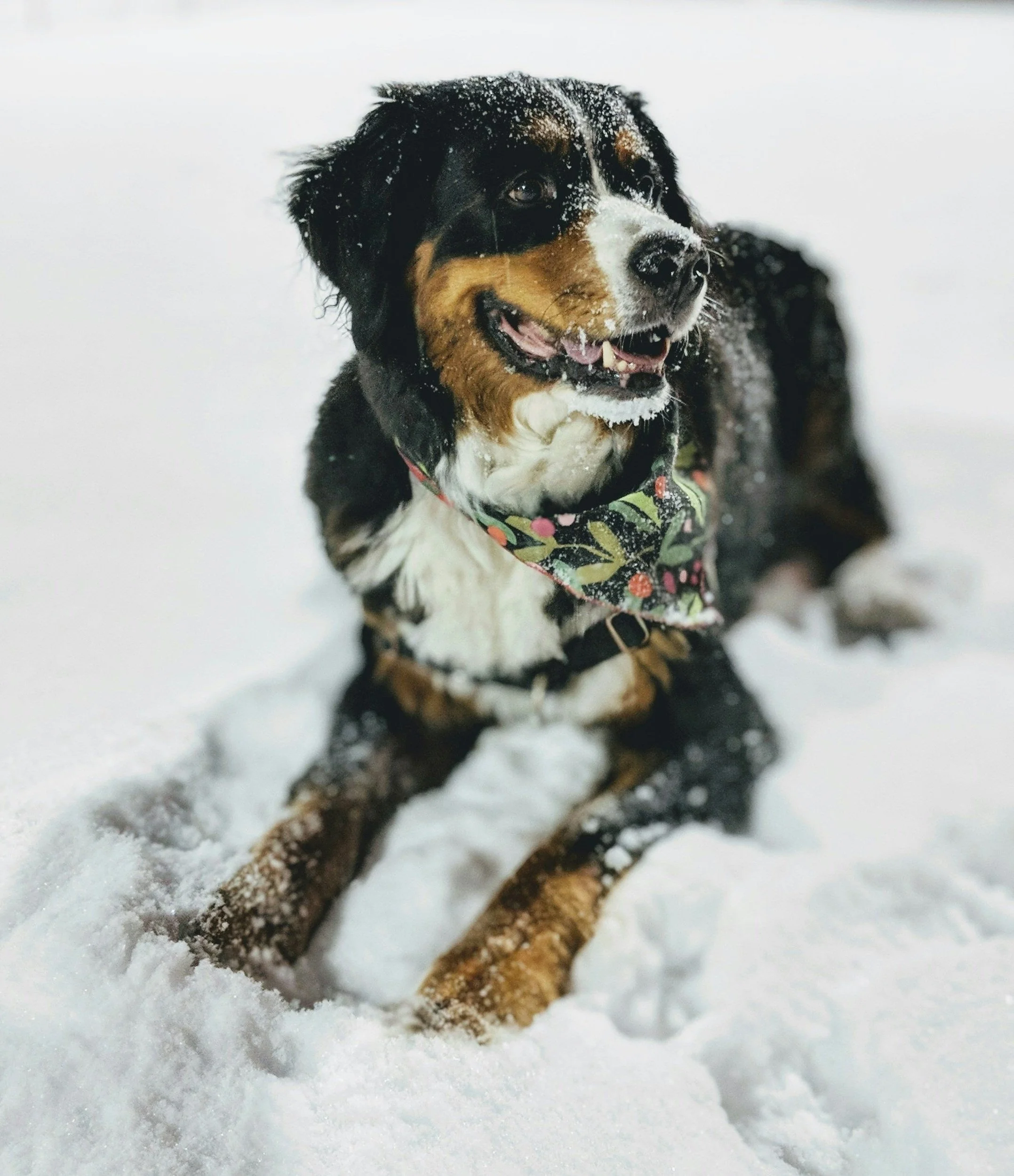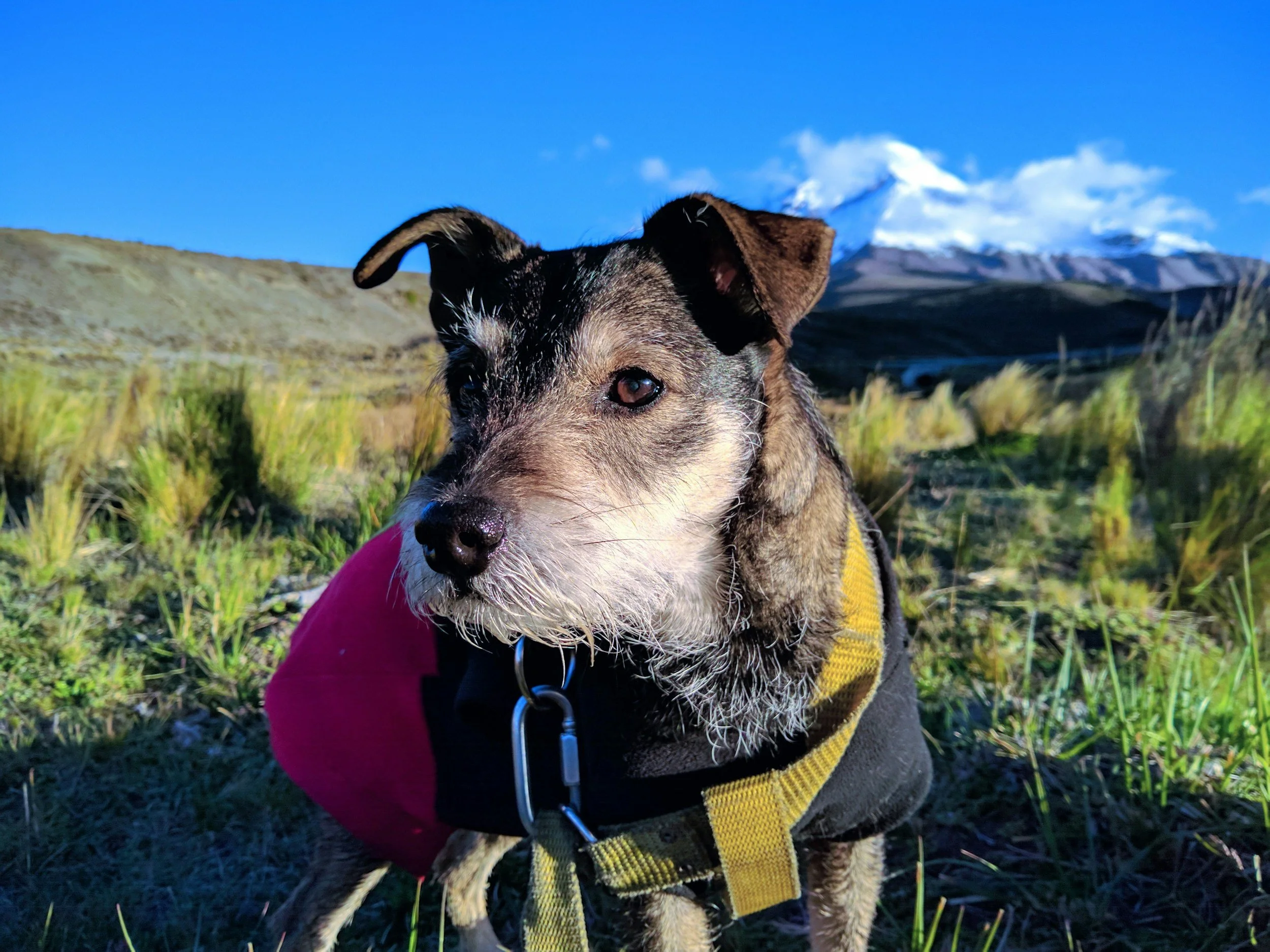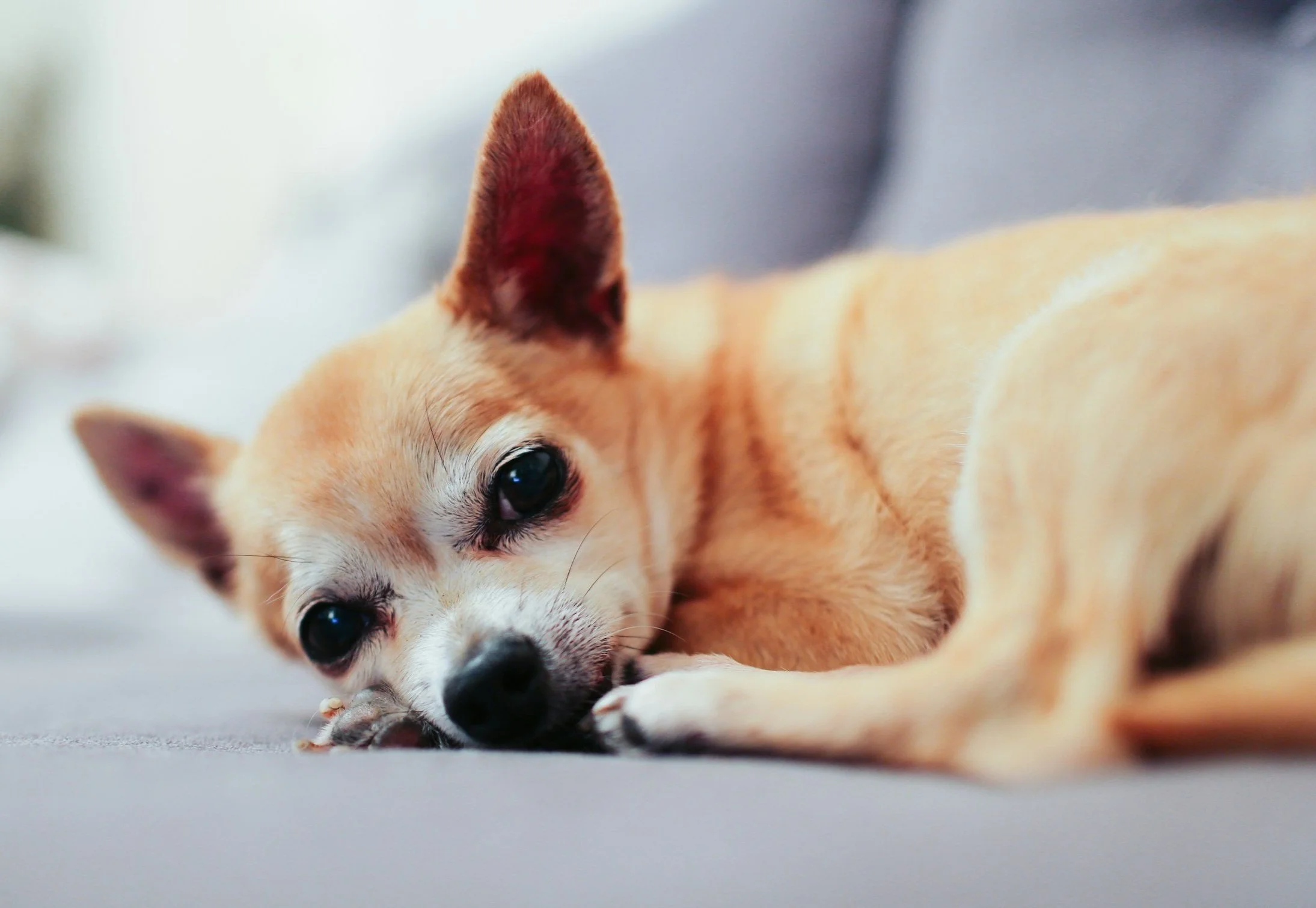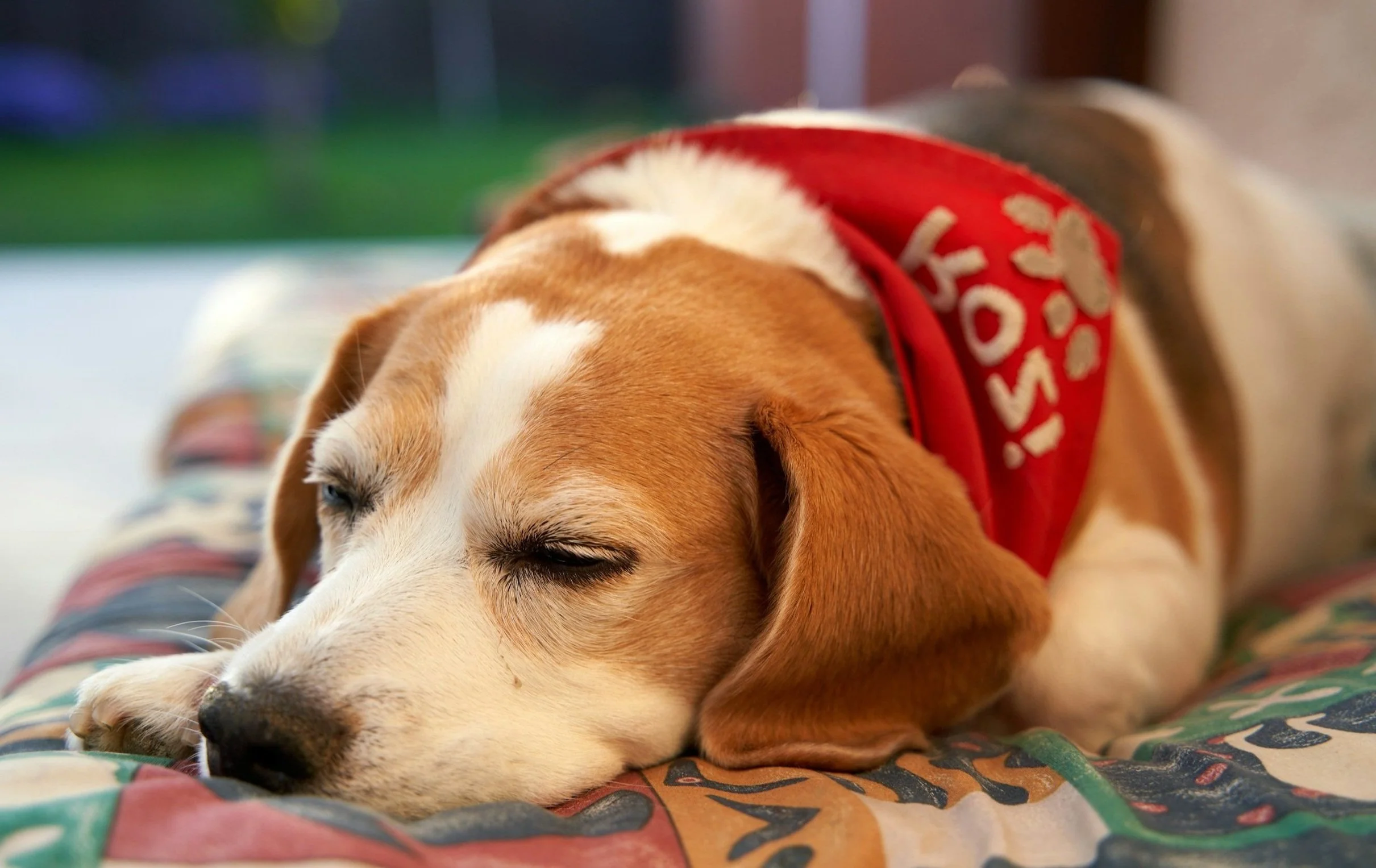Keep Your Dog Thriving This Winter
Winter is my favourite time of year; cosy nights, warm drinks, and extra layers! However, for our senior pets, the cold weather can aggravate conditions like arthritis and stiff joints, making it harder for them to move around comfortably. The challenge is to keep them active and comfortable throughout the season.
Just like us, older dogs can feel the effects of winter more acutely. With a bit of planning, some simple changes, and plenty of TLC, your senior dog can still enjoy the cold winter months to the fullest.
Why Winter Is Harder on Senior Dogs
As the temperature drops and the days get shorter, our older dogs can feel the chill in more ways than one. Age-related conditions like arthritis, joint stiffness, and muscle weakness are often made worse by cold weather, making everyday activities like walking, playing, or getting up from bed more challenging.
Their ability to regulate body temperature also declines with age. This means they get cold faster and take longer to warm up, especially breeds with thinner coats or less body fat. A well-fitted coat or jumper can make a big difference and bring enjoyment back to their morning walk.
Signs your dog may be feeling the cold:
Reluctance to go outside or use stairs
Stiffness after rest
Shivering or trembling
Decreased activity or enthusiasm
If you notice any of these signs, your dog could benefit from extra warmth, support, and modifications to their routine.
Exercise and Activity When It’s Cold
Keeping your dog active during winter can be tricky — no one wants to go for a walk in the pouring rain or icy wind. But regular gentle movement is essential for a strong and healthy body, Regular activity helps lubricate joints, maintain muscle mass, and is a great mood booster.
When outdoor walks aren’t an option, try:
Indoor games like hide-and-seek with treats or favourite toys
Nose work activities to encourage scenting and sniffing
Interactive toys that encourage problem-solving and movement
Short indoor training sessions to keep their body and brain active
Gentle exercises and strength routines at home can also help maintain their mobility and muscle tone, ensuring they stay strong and healthy all year round. Even a few minutes of movement throughout the day can help prevent stiffness and keep their spirits up.
If your dog enjoys being outside, shorter, more frequent walks during the warmer parts of the day are ideal. Remember their coat and to warm them up first!
Tailored Exercise and the Role of Hydrotherapy
If your senior dog is starting to slow down or has specific mobility challenges, low-impact, structured exercise can help them stay active without overdoing it. Gentle movement can ease stiffness and discomfort, and one of the most effective options is hydrotherapy.
Hydrotherapy allows dogs to exercise in a warm, supportive environment that’s kind to their joints.
Hydrotherapy benefits:
Warm water to soothe joints and muscles
A controlled, low-impact environment
Resistance to build strength safely
Buoyancy that reduces joint strain
Improved circulation and range of motion
It’s especially helpful for dogs with arthritis, recovering from surgery, or dealing with conditions like hip and elbow dysplasia. Even just a few sessions can help maintain their strength and mobility during winter.
Speak with your vet or rehab therapist to see if hydrotherapy is right for your dog.
Health & Preventative Care
Cold weather can intensify joint issues and discomfort, which makes movement uncomfortable, so it’s important to stay on top of your senior dog’s health during winter.
That’s why winter is an ideal time to schedule a health check-up, particularly for older dogs. A general health review can help identify and monitor changes that might need attention, like:
Subtle weight gain or loss
Changes in mobility
Dental discomfort
New or worsening pain
Skin or coat changes
Ask about joint supplements such as glucosamine, chondroitin, or green-lipped mussel might benefit your pet and support their mobility.
Taking a preventative approach helps your pet continue to be active, happy, and comfortable throughout the season.
Mental Stimulation
Winter doesn’t just affect our dogs physically — being stuck indoors more often can also impact their mental wellbeing, leading to boredom or restlessness. Engaging your dog's mind with enrichment toys and puzzle games can be just as beneficial as physical exercise.
That’s why regular brain games and toys can be beneficial, especially for senior dogs who might not be as active as they once were. Whether you choose to create DIY enrichment at home or invest in puzzle toys, these activities stimulate and engage your dog.
Just a few minutes of brain games a day can:
Reduce anxiety and boredom
Support cognitive health
Help tire them out (in a good way!)
Try activities like:
Food puzzle toys
Lick mats or snuffle mats
Treat-dispensing balls
DIY games like muffin tin puzzles or cardboard box shredding
Hide-and-seek or scent trails using hidden treats
You can also revisit old training cues or introduce a few new tricks, which can be great for cognitive health. Things like “touch,” “spin,” or “place” are low-impact exercises that challenge their brain and strengthen your bond. Plus, it’s a fun and rewarding way to spend quality time together.
Mental enrichment doesn’t have to be complicated; rotating toys or giving your dog something new to explore can add variety and joy to their day.
Comfort & Warmth at Home
A few simple changes around the house can help make your home more senior-dog friendly during winter.
Cozy Bedding:
Elevated beds keep them off cold tiles or timber floors, and layering with warm blankets can help them stay snug. Orthopaedic beds that support joints are particularly helpful for older dogs. If your dog enjoys spending time outside, no matter the weather, make sure they have a sheltered, cozy spot as well.Warm Clothing:
As dogs age, they often become more sensitive to the cold. If your dog tolerates it, a warm, soft jumper, fleece, or jacket can help them stay comfortable, both indoors and out. Just be sure it doesn’t restrict movement or rub in sensitive areas.
Draft Management:
Keep your dog’s bed away from windows, doors, or draughty areas. If your home is particularly chilly, you can consider using a pet-safe heated pad (under supervision) can add extra warmth.
Floor Safety:
Slippery floors can be intimidating and dangerous for senior dogs. Non-slip mats (cheap yoga mats work great!) can provide traction and help prevent falls, especially for dogs with reduced coordination.
These home adjustments can have a big impact, not only supporting their physical health but also creating a space where your dog feels safe, secure, and relaxed.
Emotional Health and Bonding
Winter often means changes to routine, less time outdoors, and fewer outings, and those shifts can affect your dog emotionally, with shorter days, less time outdoors, and fewer social outings. That’s why emotional support is just as important as physical care.
Dogs thrive on connection, especially our older ones who may be slowing down and spending more time resting. Making time for gentle bonding activities like:
Daily cuddle time
Calm brushing or grooming sessions
Soft massage or bodywork
Quiet time together on the couch
These can help your dog feel safe, seen, and loved, secure, calm, and connected. For some dogs, changes in routine or decreased stimulation can also cause anxiety or signs of depression; keeping their environment consistent and emotionally enriching is key.
Even if your dog isn’t up for long adventures anymore, they still value your presence and attention more than anything.
Grooming and Skin Care in Winter
Winter’s dry air and cold surfaces can be tough on your dog’s skin and paws, especially older dogs who may already have more delicate skin or compromised immune function, so a little extra care goes a long way.
To help:
Check paws regularly for cracks or splitting, especially after walks
Use paw balm or moisturiser if needed (just make sure it’s dog-safe!)
Keep their coat clean and well-groomed to help it insulate properly
Avoid too-frequent baths, which can strip oils from the skin
Wipe muddy or wet paws after walks to prevent irritation
If your dog seems itchy, uncomfortable, or their coat changes in texture or shine, speak with your vet or regular groomer to help rule out underlying issues and recommend gentle, effective products. A little extra attention in this area can go a long way.
Make Winter a Season of Comfort
Winter might bring its challenges, but it can also be a beautiful time to slow down, snuggle up, and reconnect with your senior dog. With a few thoughtful adjustments and a focus on both physical and emotional well-being, this season can be one of warmth, bonding, and well-being.
Every dog is different, and their needs may shift with age, but with care, creativity, and a whole lot of love, you can help them thrive this winter and beyond.




